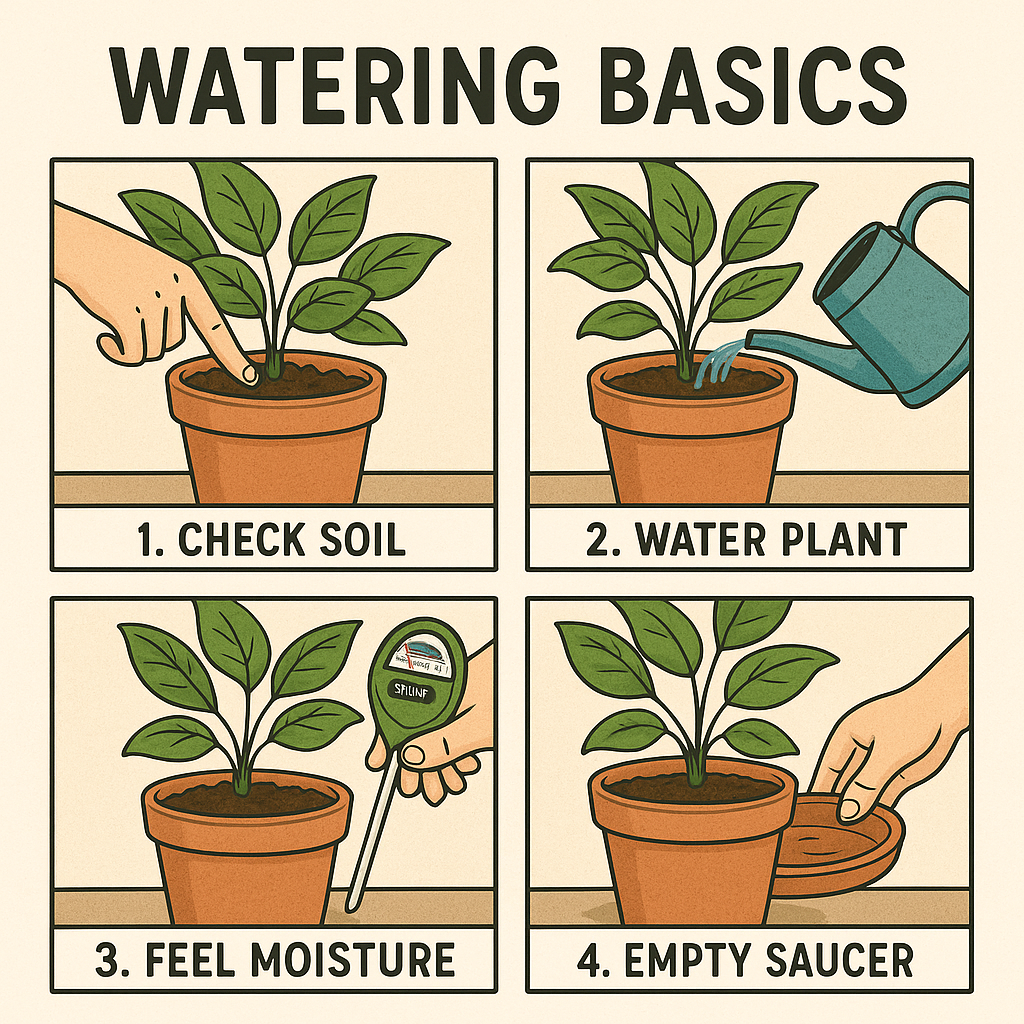Watering is one of the most essential—and commonly misunderstood—parts of plant care. Whether you’re growing herbs on your windowsill or vegetables in the garden, knowing watering basics: when and how much to water your plants will help prevent overwatering, root rot, and wilting.
Why Watering Properly Matters
Water is vital for transporting nutrients, supporting photosynthesis, and maintaining plant structure. However, too much or too little can quickly damage even the hardiest plants.
Proper watering leads to:
- Healthier root systems
- Consistent growth and flowering
- Reduced plant stress and disease
Signs You’re Overwatering or Underwatering
| Overwatering | Underwatering |
|---|---|
| Yellowing leaves | Wilting, dry, crispy leaves |
| Mold or fungus on the soil surface | Soil pulling away from the container |
| Root rot (foul smell) | Stunted or slow growth |
When to Water Your Plants
🌤️ Outdoor Plants
- Early morning is best. It reduces evaporation and gives water time to soak in.
- Evening can work if mornings are not possible, but avoid wet foliage overnight (to prevent fungal growth).
🪴 Indoor Plants
- Water based on soil dryness—not the calendar.
- Use the finger test: insert your finger 1–2 inches into the soil. If it feels dry, it’s time to water.

How Much Water Do Plants Really Need?
There’s no one-size-fits-all answer—it depends on plant type, size, climate, and pot size. However:
- Most houseplants need watering once a week during spring/summer, less in winter.
- Outdoor vegetables may need watering 2–3 times a week in hot climates.
- Water deeply and thoroughly so roots grow downward, not just near the surface.
Tip: It’s better to water deeply less often than to water lightly every day.
Factors That Affect Watering Frequency
- Plant type: Succulents need less; ferns and tropical plants need more.
- Container size: Small pots dry out faster than larger ones.
- Light exposure: Plants in full sun dry out quicker than those in shade.
- Humidity and temperature: Hot, dry air increases water loss.
Tools to Help You Water Right
- Moisture meters to check soil hydration
- Self-watering pots for consistent moisture
- Drip irrigation systems for outdoor gardens
- Watering globes for when you’re away
Watering Tips for Success
- Use room temperature water for indoor plants.
- Avoid wetting the leaves—water at the base.
- Let excess water drain from pots—never let plants sit in standing water.
- Group plants with similar watering needs together.
If you’re just getting started with home gardening, check out our full guide on How to Build Your First Garden at Home.
Final Thoughts
Mastering watering basics: when and how much to water your plants is key to growing a healthy garden. By observing your plants, checking the soil, and watering wisely, you’ll avoid common pitfalls and enjoy vibrant, thriving greenery—indoors or out.
You can buy moisture meters and self-watering planters to improve your watering routine here on Amazon.
